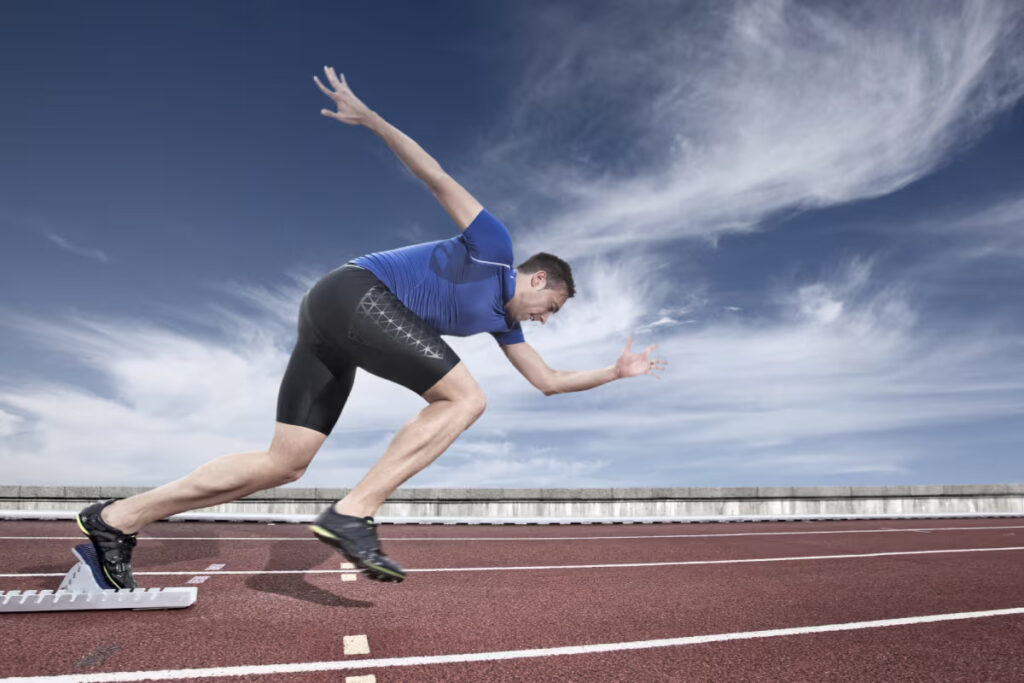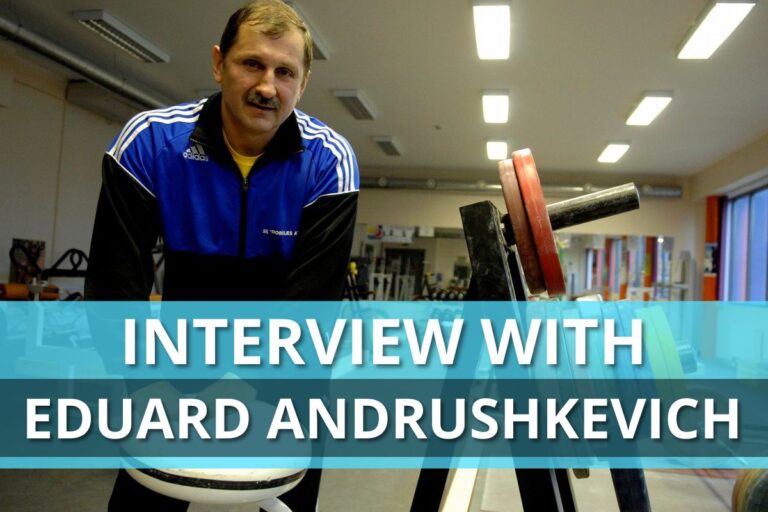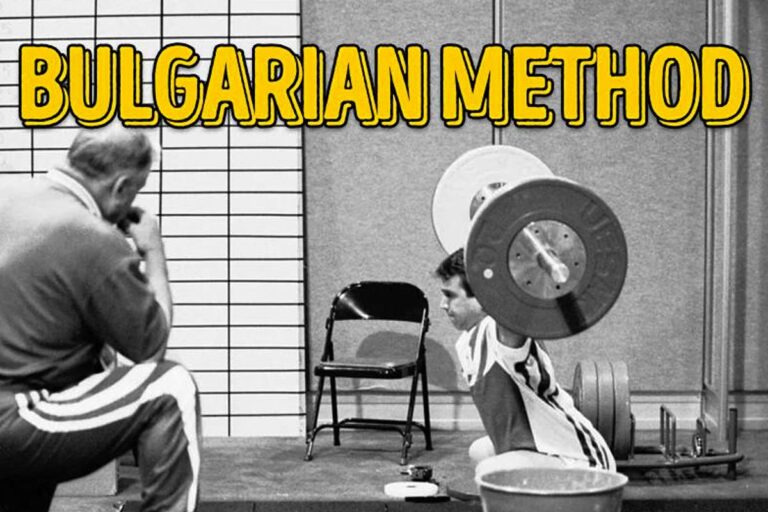What Are the Benefits of Sprinting, and Should You Take It Up?
We all have heard how good jogging is for our health, but what about the benefits of sprinting? Could it be that it’s even better for us, and should we look into incorporating it into our fitness plans?
Well, in this short article, we will go over the benefits of running sprints in a quest to answer the question: “Is sprinting good for you?” We will also take a look at what does sprinting do for your body and what are the sprinting benefits for legs.
So don’t go away. We’re just getting started.
What are the Benefits of Sprinting?
Does sprinting make you faster? Yes, that’s one of the benefits of sprinting. Along with that, it also increases your VO2 max, boosts your metabolism, improves body composition, and promotes cardiovascular health.

Benefits of Sprinting You Should Know
Everyone knows that doing steady-state cardio is good for our overall health. And that’s why we see so many people cycling, jogging, and even rowing in the gym. However, what we rarely see is someone doing sprints. But that’s a mistake that we should look into amending. After all, sprinting has so many benefits.
Let’s check them out.
✅ Boosts Your Metabolism
Most people start going to the gym to either get fitter or lose weight. As a form of exercise, sprinting tends to burn more calories per unit of time compared to jogging, but it lasts for a shorter amount of time. After about 30 seconds, the body is depleted of its anaerobic stores and has to rely on aerobic sources of energy, which are unable to sustain that kind of effort.
Because of that, people assumed that sprinting isn’t the best way to burn calories, and so people aiming for weight loss should stick to longer, steady-state cardio sessions.
However, recently it has been found that sprinting increases the rate of energy burn post-workout – meaning it doesn’t just help burn calories during the training but also in the minutes/hours after that.
This effect is known as “after-burn” or EPOC (excess post-exercise oxygen consumption), and it’s proven that HIIT workouts are superior in creating it, as opposed to lower-intensity or steady-state training.

✅ Promotes Cardiovascular Health
Nowadays, the fitness community loves to use the word HIIT and categorizes all kinds of training sessions and styles as high-intensity interval workouts. However, one of the most real and most effective forms of HIIT training is, you guessed it, sprinting.
It’s an exercise that requires you to give one hundred people for a short period of time. Usually in training, you can do it in intervals – for example, 30 seconds of work and 30 seconds of rest.
Recent research has shown that HIIT training has many cardiovascular health benefits and may be better than steady-state cardio. In a study, people who engaged in HIIT training saw more significant improvements in their VO2 max than those who did lower-intensity cardio.
With that said, HIIT is much less enjoyable for most people because it’s much harder to do.
✅ Improves Body Composition
Body composition is the ratio of fat to muscle in your body, and it’s typically something that people who are already-fit want to improve. Most people tend to have a weak body composition, which means low muscle mass and high body fat.
One of the sprinting benefits is that it doesn’t only help you burn fat but also encourages your muscles to grow. Research shows that it shocks the body into getting fitter at the cellular level, the one most important for body composition.
It’s assumed that sprinting signals the body to adapt to these new activity requirements, which essentially means improving metabolic control and oxidative capacity, thus making you leaner.
One of the best workouts to help you improve your body composition by stimulating fat loss and helping you maintain muscle mass is hill sprints. Typically done as a kind of HIIT session, hill sprints help you build not only endurance but also strength in your core and legs, as they require a ton of explosive power.
As a beginner, you can start by sprinting up a hill for 30 seconds, then returning back down walking. Once you get better, you can either sprint for longer or you can do back jogging.
Drawbacks of Sprinting
Now we’ve said many good things about sprinting, but it’s time to mention some possible drawbacks. As with most exercises, even though sprinting can bring a lot of good, it can also lead to issues if done incorrectly or too much. And so, it’s vital that you know all the negatives of sprinting before you make it an integral part of your workout plan.

❌ You Always Have to Warm Up
The first thing worth noting is that warm-up is always needed before a running workout. Regardless of whether you’re a seasoned veteran or a beginner. Heading into a sprint without having warmed up can lead to all kinds of injuries, and it may leave you unable to train for months. Now this warm-up may add an additional 20 minutes to your workout, but it is vital for preserving your health and for helping you achieve better results.
❌ Causes Fatigue
Sprinting requires your muscles to contract at maximum or close to it. And if you’re not particularly fit or you haven’t trained in a long time, you might get tired doing it after just several minutes. That’s why it’s not really an exercise you would recommend to a complete beginner or to someone who’s obese or has a ton of weight to lose.

❌ Impact on the Joints
When you’re sprinting, you’re giving it your all, and so every stride you make has more impact compared to a stride during a jog. And if you don’t have the right technique, you might start heel striking (landing on your heel first), making you slower and further increasing the impact on your joints.
Along with that, if you have any injuries, it might aggravate them, so you should be super careful with the frequency of your sprinting sessions and your technique.
❌ Muscle Strain
Along with the impact on the joints and on your cardiovascular joints, sprinting is taxing for your muscles too. It involves maximum contraction of your fast-twitch muscle fibers, and it increases the chance of you getting a muscle strain.
Additionally, sprinting for more than a minute at a time can also lead to more muscular damage. In order to prevent getting injured, you should pay attention to your body’s signs and avoid sprinting every day. It’s vital that you give your muscles time to recover and to stretch before and after every session.
Now, this is not a drawback, but it’s important to note that beginners should avoid sprinting in bad weather conditions or on slippery trails. If you’re struggling to draw a breath and your muscles have not yet adapted to the stress that sprinting causes, going sprinting when it’s snowing, raining, or even when it’s too hot can lead to injuries and other health-related problems.
Sprinting vs. Other Exercises
Sprinting is often compared to other forms of exercise, such as cycling, jogging, and even rowing. However, as we mentioned, it affects your body in an entirely different way, so let’s see exactly how.

1. Sprinting vs Jogging
Sprinting and jogging are two variations of running that are being done with different intensity. When you sprint, you’re giving it your all for a short period of time. On the contrary, when you’re jogging, you’re going slowly in an effort to sustain the run for as long as you possibly can. Both of these exercises are great for your overall health, your cardiovascular system, and your endurance; however, they affect your body in different ways.
Sprinting is much more taxing on the joints and the muscles, but it’s more effective when it comes to increasing your VO2 max and retaining (and building) muscle mass. On the other hand, jogging is a great tool to increase your lung capacity, improve your endurance, and train without causing as much stress on the body.
You can easily claim that sprinting is the more effective exercise. Still, jogging is the one you can do more often – not only because it’s less taxing on the body, but because it generally feels easier to do for most people.
2. Sprinting vs Cycling
Cycling and sprinting (running) are also two forms of cardio, but they’re extremely different in how they affect your body. Generally, sprinting can burn more calories than cycling – it’s more taxing on the body, and you get the EPOC effect, which enables you to burn calories even long after you’ve stopped exercising.
On the other hand, cycling is easier on the joints, can be done for a much longer period of time, and can help you build muscle as well.
Cycling and sprinting are great for improving cardiovascular health, building muscles, and boosting endurance; choosing one depends entirely on your preferences. Along with that, you can essentially also do a sprint on the bike.
The moment you start pedaling faster, you’re effectively inputting more effort and imitating the kind of intensity required for a sprint. However, it’s still extremely different when compared to actual sprinting.
FAQ
What Happens if I Sprint Every Day?
Sprinting every day can quickly lead to injuries. Especially if you don’t have the right technique and if you’re not fit enough. As an exercise, sprinting requires maximum effort for a short period of time, which, if done daily, can quickly lead to muscle damage, exhaustion, and overall body fatigue. If you plan to incorporate sprints into your workouts, you should remember to give your muscles time to recover between sessions.
Why Is Sprinting Effective?
Sprints are so effective because they require you to push your body to its max. Essentially, with every sprint, you’re bringing your body to its max capacity, and that helps you burn fat, increase muscle mass and improve heart health.
Do Sprints Burn Belly Fat?
The short answer is yes. The longer one is that sprinting aids body composition, meaning it helps you lose fat while simultaneously gaining muscles. And so, if you happen to have belly fat that you want to get rid of, it’s one of the best exercises to do. Additionally, sprinting, like all other forms of running, engages your core muscles, further helping the development of your abs.
Conclusion
As you already know from this article, sprinting is one of the most effective forms of cardio out there. It not only boosts your athletic performance by increasing your endurance and improving your VO2 max, but it also helps you look better, as it builds muscles and gets rid of fat.
For all those reasons, sprinting is a must-do exercise for all regular gym go-ers and for all those who want to become leaner and faster. The great thing is that when you start sprinting, you tend to see the benefits almost immediately.
Finally, if you’ve tried incorporating sprinting into your training sessions, let us know your thoughts in the comment section. What benefits did you see? What drawbacks? We’re waiting for your feedback.
Also read:
- Tempo Run Workout
- Benefits of Jogging in the Morning
- How to Carry Phone While Running
- Best Gloves for Running
References:
- 7 Things to Know About Excess Post-exercise Oxygen Consumption (EPOC) // Acefitness: https://www.acefitness.org/resources/pros/expert-articles/5008/7-things-to-know-about-excess-post-exercise-oxygen-consumption-epoc/
- Effects of high-intensity interval training on cardiometabolic health: a systematic review and meta-analysis of intervention studies // Bjsm: https://bjsm.bmj.com/content/51/6/494
- Everything to Know About VO₂ Max // Healthline: https://www.healthline.com/health/vo2-max
- 8 Running Workouts to Build Strength and Endurance // Nomeatathlete: https://www.nomeatathlete.com/running-workouts/
- Five Reasons Why You Should Sprint Train // Exerciseright: https://exerciseright.com.au/five-reasons-why-you-should-sprint-train/
Why Trust Us?
With over 20 years in Olympic Weightlifting, our team does its best to provide the audience with ultimate support and meet the needs and requirements of advanced athletes and professional lifters, as well as people who strive to open new opportunities and develop their physical capabilities with us.
By trusting the recommendations of our certified experts in coaching, nutrition, dietology, and sports training programming, as well as scientific consultants, and physiotherapists, we provide you with thorough, well-considered, and scientifically proven content. All the information given in the articles concerning workout programming, separate exercises, and athletic performance, in general, is based on verified data. We ensure that you can rely on our professionals’ pieces of advice and recommendations that can be treated as personalized ones which will benefit you and fully meet your needs.
The product testing process is described in more detail here
Oleksandr is a running coach and member of the Nike Run Club coaching team for 8 years. A participant in national and international competitions at distances from one kilometer to the ultra trail. Owner of mountain trail running camps. Nowadays Oleksandr is responsible for creating running training programs for athletes of various levels, coaching personally offline and online, conducts trail running camps in the mountains, participates in competitions.






